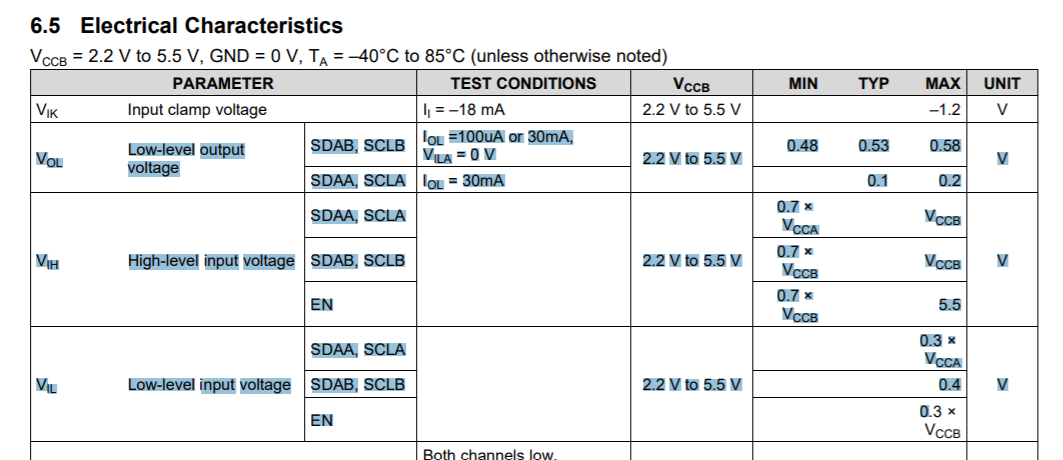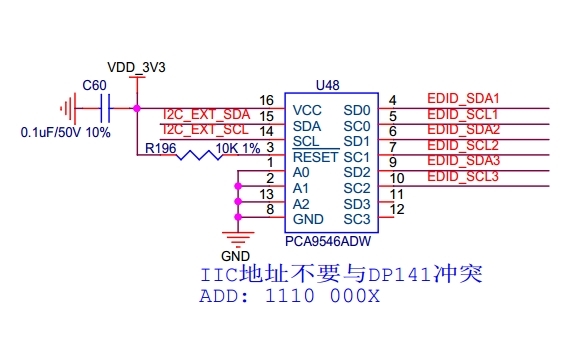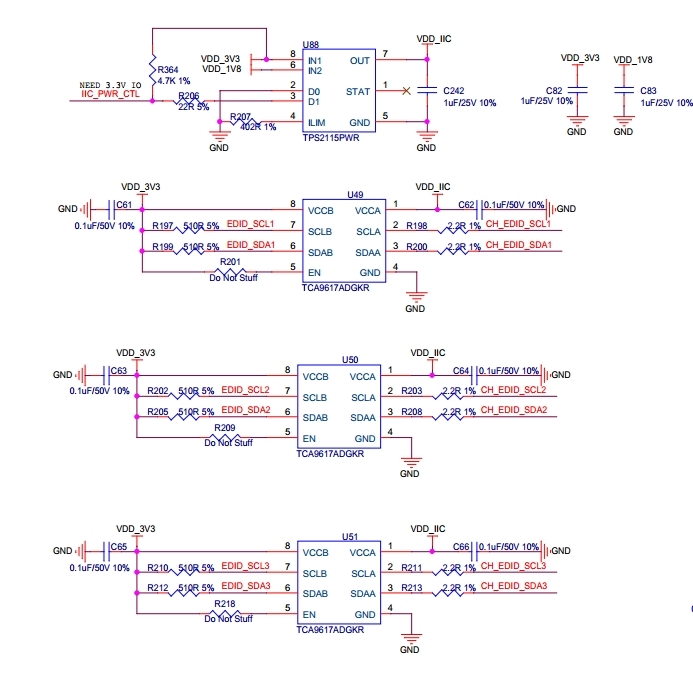Other Parts Discussed in Thread: TCA9617A, PCA9546A, TCA9546A, TCA9509
Hi team,
My customer is looking for a 1.8V-3.3V level shift, 1:3 MUX, bi-directional I2C solution. They chose the wrong solution exactly the same with the below post, which TCA9617 B side is interfacing with the B side of another 9617.
I would like to confirm. Could they P2P replace TCA9617 with TCA9800 to solve this issue? They can either just replace the right one, or replace both TCA9617.
Or, do we have better solution for this application?
Thanks.








